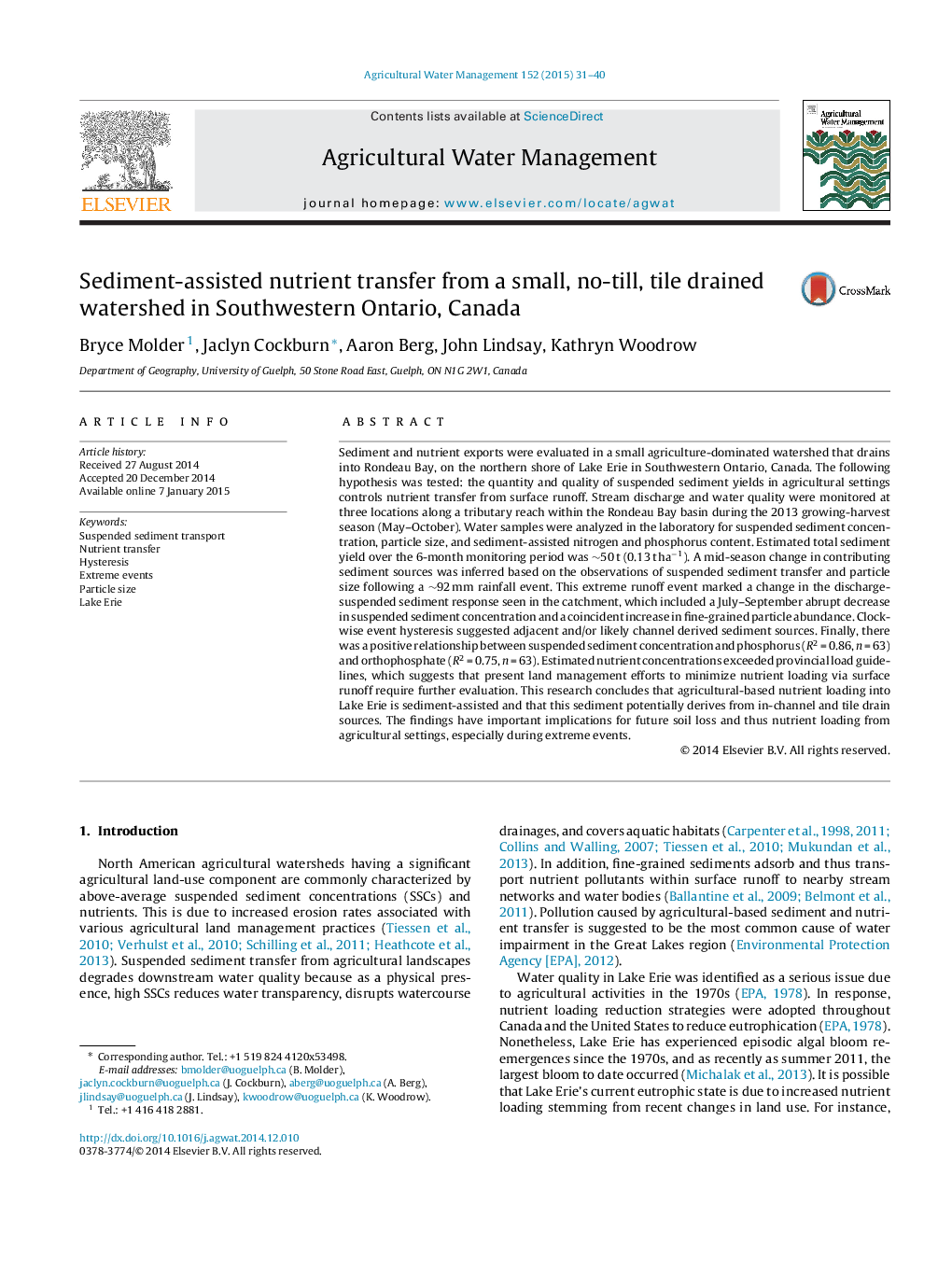| Article ID | Journal | Published Year | Pages | File Type |
|---|---|---|---|---|
| 4478516 | Agricultural Water Management | 2015 | 10 Pages |
•We monitored water quantity and quality of a small agricultural stream.•Tile drain presence influenced flow response to rainfall inputs.•Extreme rainfall event altered sediment delivery dynamics temporarily.•Phosphorus loading into the stream corresponded with suspended sediment.•Event-scale hysteresis indicates sediment is derived from channel or channel-adjacent sources.
Sediment and nutrient exports were evaluated in a small agriculture-dominated watershed that drains into Rondeau Bay, on the northern shore of Lake Erie in Southwestern Ontario, Canada. The following hypothesis was tested: the quantity and quality of suspended sediment yields in agricultural settings controls nutrient transfer from surface runoff. Stream discharge and water quality were monitored at three locations along a tributary reach within the Rondeau Bay basin during the 2013 growing-harvest season (May–October). Water samples were analyzed in the laboratory for suspended sediment concentration, particle size, and sediment-assisted nitrogen and phosphorus content. Estimated total sediment yield over the 6-month monitoring period was ∼50 t (0.13 t ha−1). A mid-season change in contributing sediment sources was inferred based on the observations of suspended sediment transfer and particle size following a ∼92 mm rainfall event. This extreme runoff event marked a change in the discharge-suspended sediment response seen in the catchment, which included a July–September abrupt decrease in suspended sediment concentration and a coincident increase in fine-grained particle abundance. Clockwise event hysteresis suggested adjacent and/or likely channel derived sediment sources. Finally, there was a positive relationship between suspended sediment concentration and phosphorus (R2 = 0.86, n = 63) and orthophosphate (R2 = 0.75, n = 63). Estimated nutrient concentrations exceeded provincial load guidelines, which suggests that present land management efforts to minimize nutrient loading via surface runoff require further evaluation. This research concludes that agricultural-based nutrient loading into Lake Erie is sediment-assisted and that this sediment potentially derives from in-channel and tile drain sources. The findings have important implications for future soil loss and thus nutrient loading from agricultural settings, especially during extreme events.
